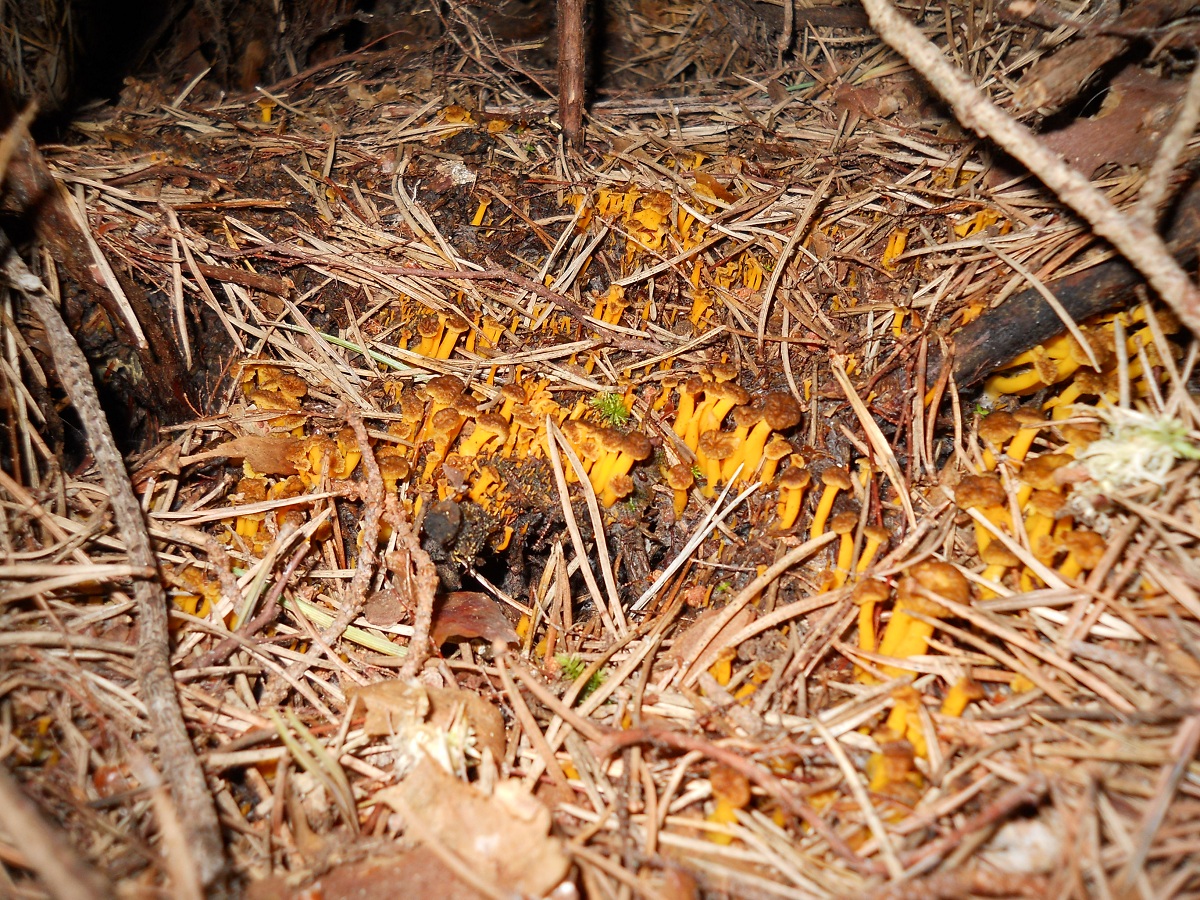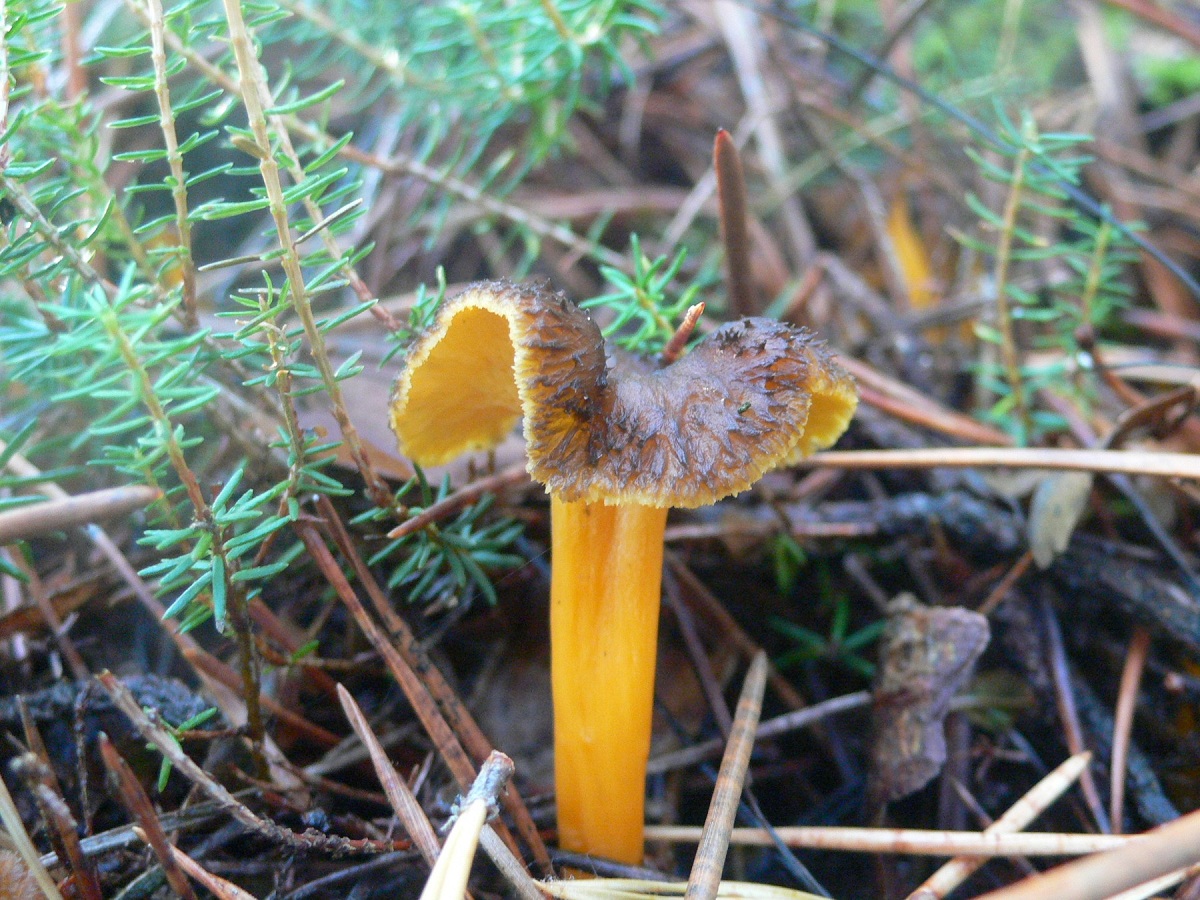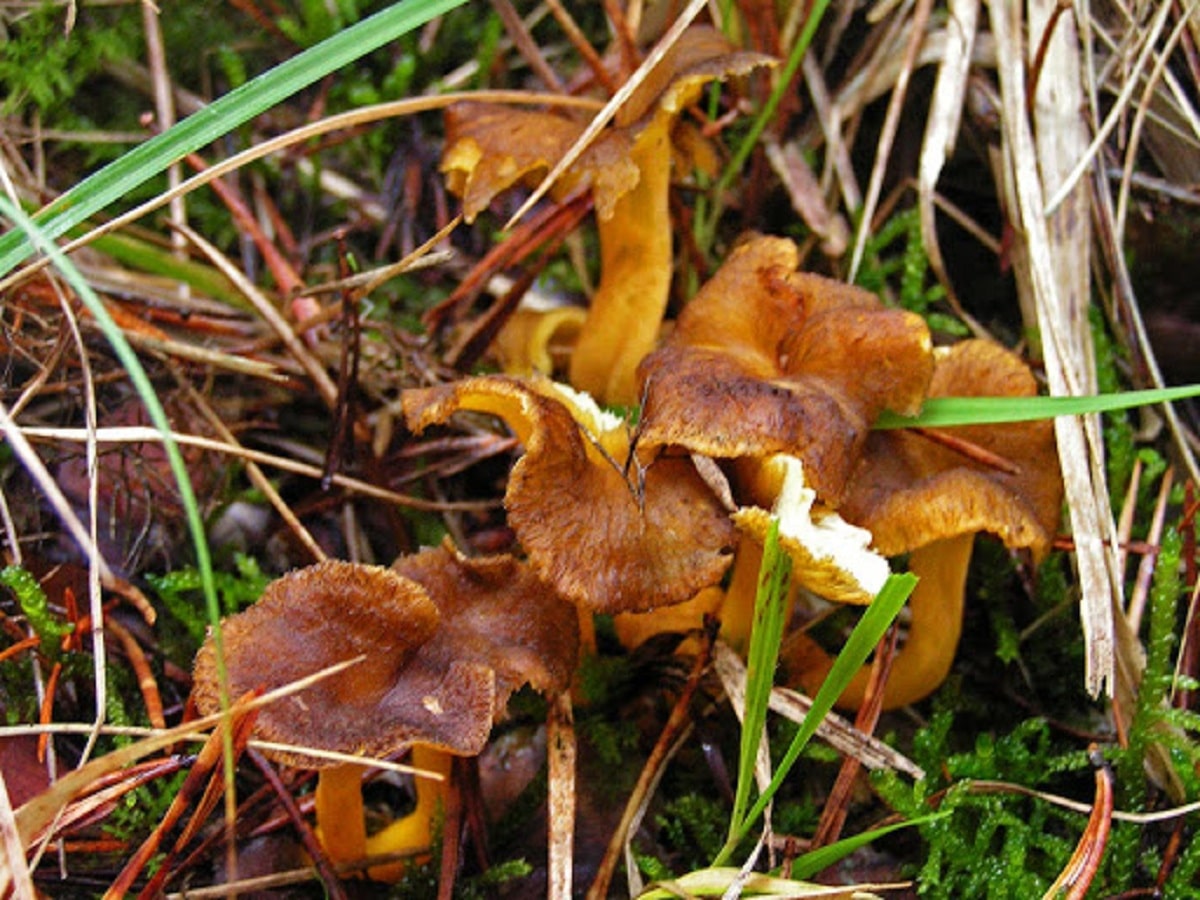
Today we are going to talk about a type of mushroom that stands out for covering the floors of the forests where it grows in yellow. It's about the Chanterelle lutescens. This mushroom is also known by some common names such as yellow trumpet or camagroc. It is quite well known and sought after by those amateur mushroom pickers. It is rare to confuse this mushroom with another due to its peculiarity.
Therefore, we are going to dedicate this article to tell you all the characteristics, habitat and curiosities of the Cantharellus lutescens.
Key features
Due to the wide range this mushroom has, it is known by many common names. It is rare the region that does not have a setales where the yellow trumpet stands out. Some of his Common names may be elver del monte, gula del monte, yellowish chanterelle, among others. One of the advantages that this mushroom offers over others is that it is almost impossible to confuse it. It is really difficult to find them, since it is more difficult to see them at first glance. Although it has a very striking color, it is a mushroom that is quite camouflaged from above.
It is not at all exaggerated to walk on this mushroom without realizing it. We are going to list its main characteristics.
Hat and foils
The hat of this mushroom has a development with a convex shape that evolves as it develops until it has a trumpet or funnel shape. This shape of the hat is where it has its common name of yellow trumpet. It should be noted that this entire mushroom is hollow. If we get to analyze the mushroom from the hat to the foot it has a hollow trumpet shape. The edges of the hat have a scalloped shape and are divided into fine lobes. These lobes are unevenly placed and rolled in an irregular and sinuous way.
If we look at the general appearance of the mushroom it has a small size. The color of its cuticle is variable and it does so between colors that go from brownish-brown to yellowish. Its colors become lighter as we move away from the center of the hat towards its margin. The hymenium of the mushroom is mostly smooth. Some of them have more discreet folds as if they were longitudinal veins. This hymenium is slightly wrinkled and has some yellowish hues with some shades of reddish, orange and earthy.
Pie and meat
As for the foot, it has a cylindrical appearance and it rarely reaches lengths of more than 8 centimeters. The diameter of this foot is around 2 to 3 centimeters, so it can be considered as something delegated. It has a homogeneous shape with respect to the hat that also has a small diameter. The color of this foot is usually an intense orange yellow. This is the part of the mushroom that is easiest to differentiate.
Lastly, its meat is elastic and fibrous. Although this mushroom does not have a large amount of meat, it is considered an excellent edible. It has an intense and fruity aroma and a mild flavor. The small size of this mushroom means that, to be able to enjoy, you have to consume a large number of them. One of the advantages of its storage compared to other mushrooms is that it does not usually get wormy.
Habitat of the Chanterelle lutescens

One of the questions most often asked by mushroom pickers is where to look for the Chanterelle lutescens. The season of this mushroom is quite long. It can usually be found from late summer to late winter season. If we go to not very hot and humid areas we can find a large number of specimens from the summer. It depends on the temperatures and the amount of humidity in the ecosystem that your period can be navigated for longer.
They are able to withstand the winter frosts and it is not at all strange to collect a large number of yellow trumpets in the month of February. It should be mentioned that these mushrooms grow in greater abundance in areas of lower elevation and that are well protected from strong winds. This is because the strong wind is able to reduce the humidity. This mushroom needs a high enough humidity to be able to develop in good conditions.
The habitat of this mushroom is any place that has a calcareous or calcareous soil. Mainly we can locate it near pine forests and they are hidden under the pine needles. Although less proportion, it can also be located in oak groves while there is a high level of humidity. The pine species that are capable of harboring the most quantity of this mushroom are the Pinus nigra and Pinus sylvestris.
One of the aspects to take into account when collecting it is that the Chanterelle lutescens grows in large groups. That is, it is rare to find isolated specimens. Normally it is quite a show to find the yellow trumpet since, although they can be well camouflaged, once you find a specimen, You can be collecting for hours almost without getting up off the ground. You have to be careful in the mossy areas as they camouflage quite well.
Possible confusions of the Chanterelle lutescens

As we have mentioned before, the peculiarity of this mushroom makes its possible confusion unlikely. Furthermore, confusing it with another species is not dangerous. This means that species that bear a resemblance to this mushroom are also excellent edibles. Some of the species of the genus Cantharellus that can generate some confusion with this mushroom is the Chanterelle tubaeformis. The morphology of this mushroom is very similar to that of the yellow trumpet and It can be distinguished, we look at the foot well differentiated. The folds of the hymenium of this mushroom are very evident compared to those of the yellow trumpet. We must also look at color. It has a grayer and less shiny color. It is considered an excellent edible, so its confusion does not generate any type of problem.
I hope that with this information you can learn more about the mushroom Cantharellus lutescens.
